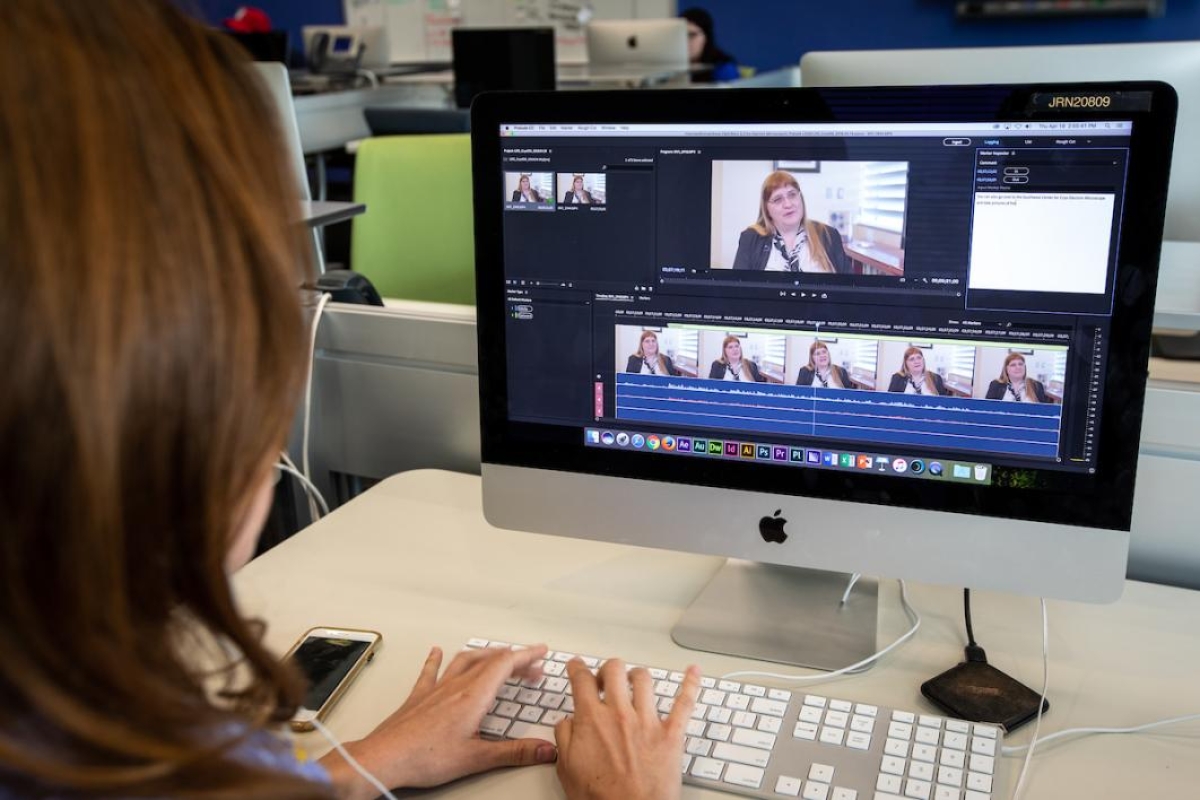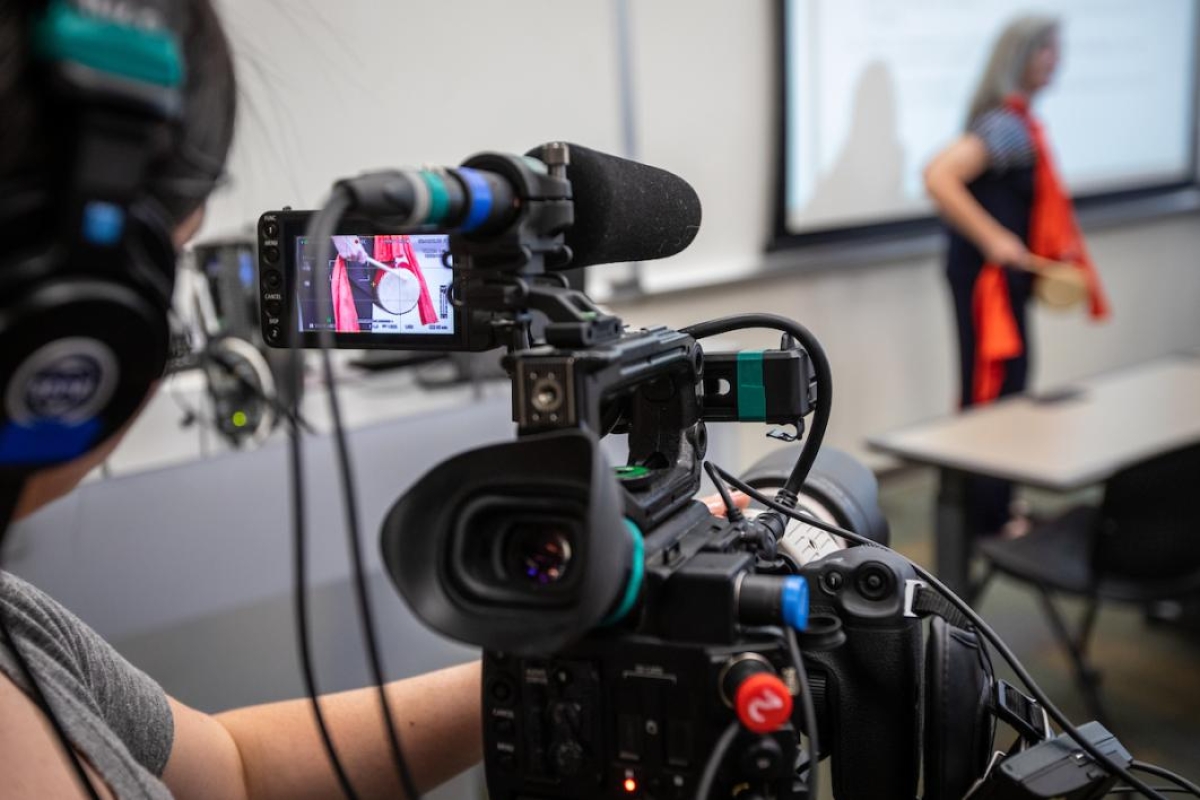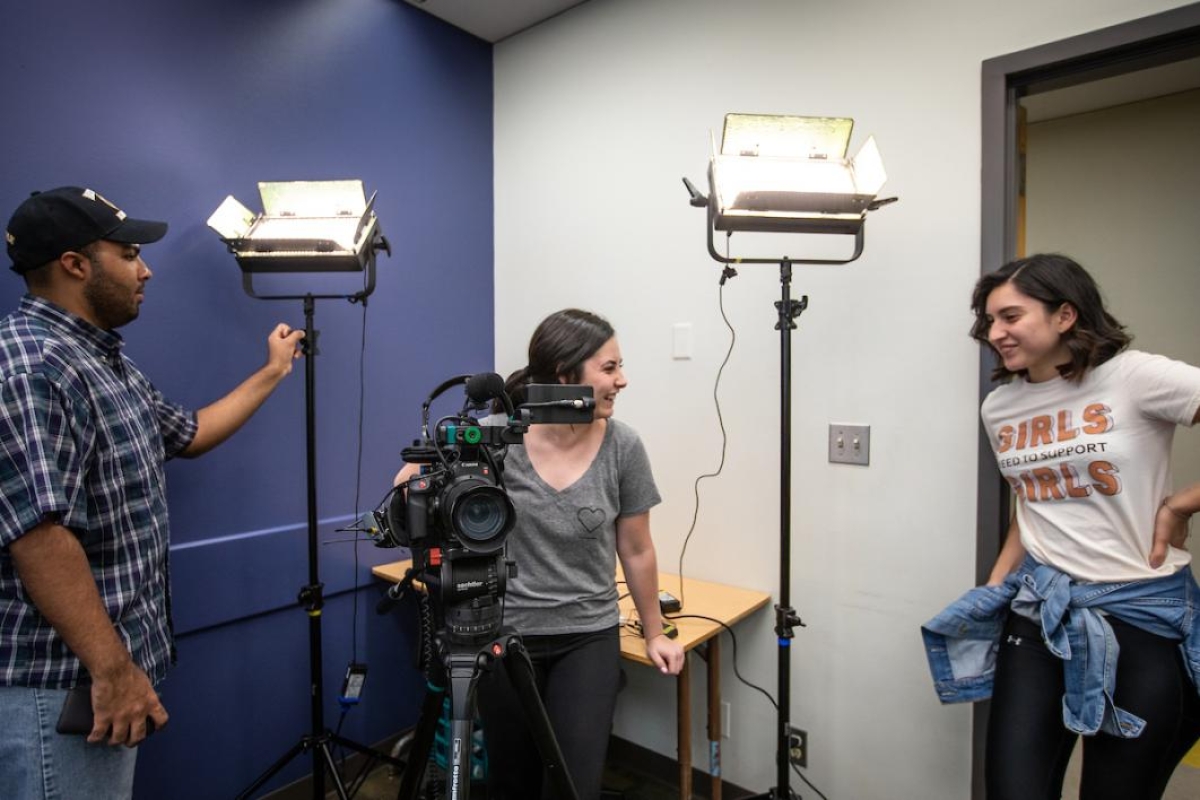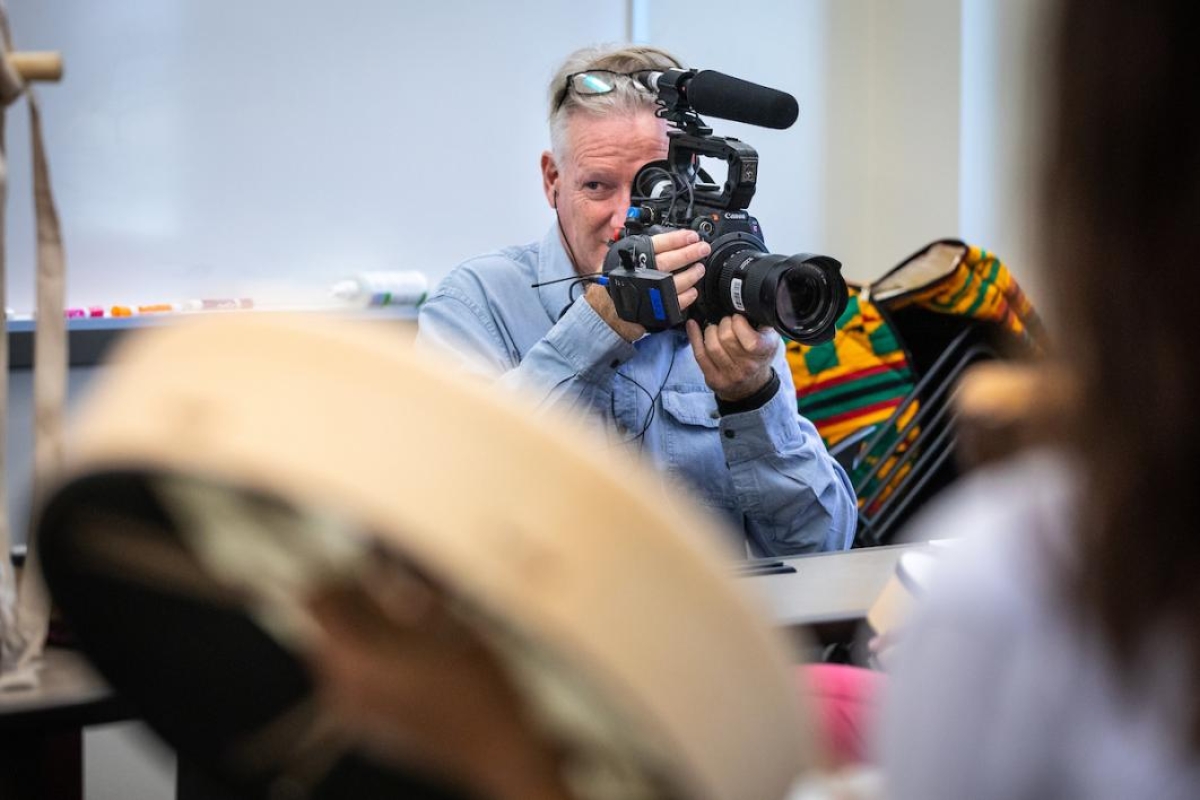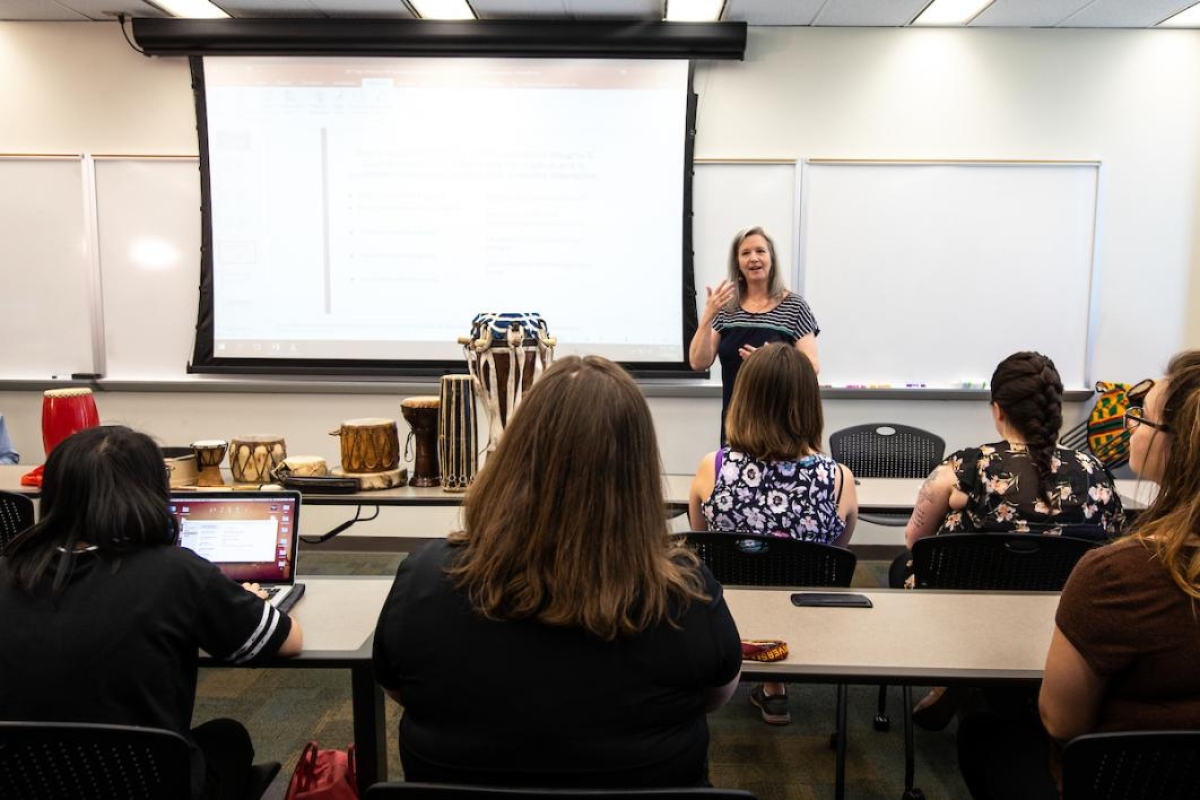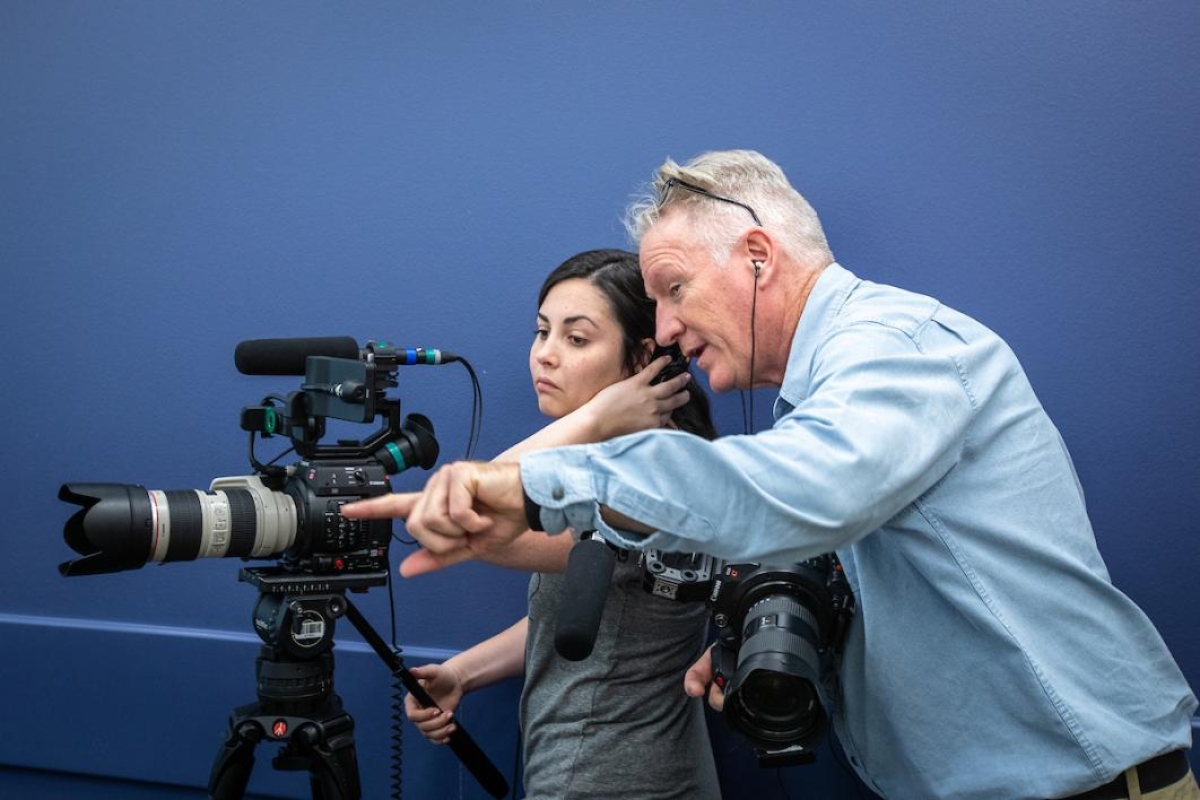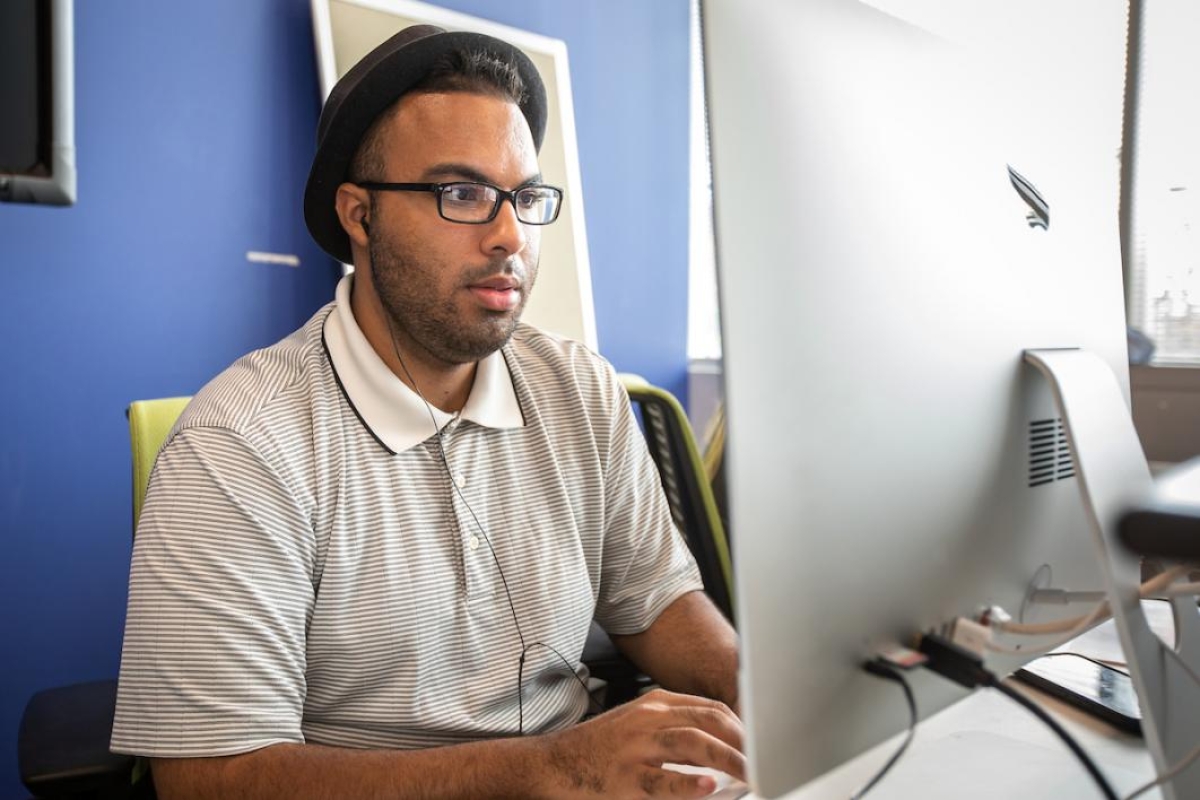ASU research is a 'Catalyst' for journalists
Cronkite School students produce new primetime science series for Arizona PBS
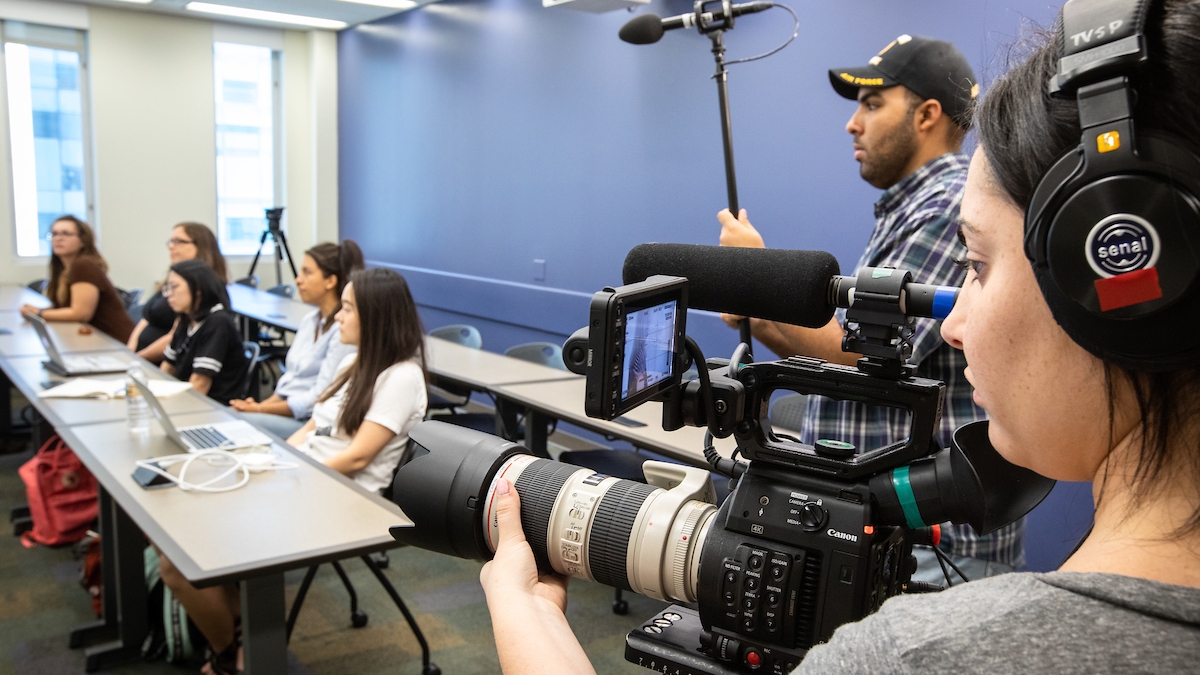
A new generation of science journalists and storytellers from Arizona State University’s Walter Cronkite School of Journalism and Mass Communication is producing a high-quality science series for Arizona PBS that is smart and relatable and shows the university’s impact on the world.
And it's about to go prime time.
The show is “Catalyst,” a 13-episode program that explores current cutting-edge research at ASU. It is the creation of students at the Cronkite School as part of an innovative professional immersion program in which they create high-quality content that serves the public under the guidance of executive producer Steve Filmer.
“The show is longer-form storytelling, and that brings with it some satisfactions and some challenges,” said Filmer, a professor of practice at the Cronkite School and an award-winning television producer whose credits include “ABC World News Tonight” and “Good Morning America.” “Keeping a viewer interested for a longer stretch of time means it has to have more moments, more story arcs and more surprises. It also means there’s a demand on students’ imaginations.”
Trailer for "Catalyst"
The 30-minute show is the first non-breaking-news series that Cronkite School students are producing for Arizona PBS. Each episode features four to five segments, which attempt to demystify research by telling the stories of the people in the labs and out in the field, spotlighting their pursuit of groundbreaking discoveries. It will air every Wednesday at 9 p.m. on Arizona PBS following “NOVA Wonders,” beginning April 25. Encore broadcasts will air Sundays at 2 p.m.
The first episode features ASU research on the development of an artificial tree that can reduce carbon dioxide as well as research advances in swarm intelligence in robots, which impacts technology such as driverless vehicles. The premiere also looks at how viruses can be used to combat diseases and how teams work under pressure using technology.
Cronkite Professor of Practice Vanessa Ruiz, the former co-lead anchor for 12 News, the NBC affiliate in Phoenix, will handle hosting duties for the new series.
“The Cronkite School’s and Arizona State University’s commitment to innovation and, in this case, the wonders of science, is again evident through the creation of 'Catalyst,' ” said Ruiz, who reviews each script, reads introductions and anchors the show. “I am incredibly proud to be a part of the team behind this quality program, which will enrich and inform our viewers.” She added that she operates by example and her students have benefitted by watching her work under deadline pressure.
“Catalyst” is supported by ASU Knowledge Enterprise Development, which promotes interdisciplinary university research institutes and initiatives.
“Telling the stories of the people behind the research, their motivations and contributions is key to fueling curiosity, and engaging future innovators and storytellers in the pursuit of path-breaking discoveries,” said Sethuraman Panchanathan, executive vice president of Knowledge Enterprise Development and chief research and innovation officer at ASU.
Students say they are receiving invaluable experience, working on all dimensions of the show from story conceptualization to research, shooting, editing, writing and production.
“I love that we get to go out into the field and interview scientists who are on the frontiers of research,” said Grace Clark, a graduate student at the Cronkite School, who also serves as show producer. “It’s fascinating to hear what they have to say and helping them communicate to wider audiences.”
Students at the Cronkite School, the home of PBS, started working in late August on the production, which supports the station’s mission of promoting lifelong learning by filling the need for more discovery-related content on television.
Each student is assigned to come up with four stories for the semester, depending on their tastes, research and discoveries. Journalism student Daniel Crumbley said he is attracted to the psychological rather than the biological spectrum of science.
“I look at stories that have an obvious human aspect to them,” said Crumbley, who produced a counseling psychology segment featuring Cynthia Glidden-Tracey, a clinical associate professor in the College of Integrative Sciences and Arts.
Glidden-Tracey gave a lecture to students on rhythmic cognitive restructuring, a psychotherapy relaxation technique that helps turn negative thoughts into positive ones.
She said she was happy to oblige.
“It’s such a great opportunity to explain my work and what I do at ASU,” she said. “It’s also interesting to watch this process unfold.”
Glidden-Tracy may have been referring to the fact that Filmer was one of the camera operators and wasn’t teaching from the sidelines.
“That’s part of what I do,” Filmer said. “I have found value in that when students see where you are in the shot and how you move, they learn much faster than if I give them a blathering two-hour lecture about how to shoot documentary style. Sometimes it’s just easier to see someone do it.”
The class has doubled in size since last semester; it now has 20 students. Filmer said he believes there's a reason for that.
“What I’m hearing anecdotally is that there’s an appetite among a certain slice of Cronkite students — they’re looking for something in addition to or other than the newsroom experience,” Filmer said.
That’s exactly the reason Bailey Netsch, a graduate student studying mass communication at Cronkite, got into the program.
“I wish this were around when I first started taking journalism classes,” Netsch said. “It’s great to have a professional program that shows what a newsroom looks like when it’s not breaking news.”
Top photo: Producer Daniel Crumbley picks up class audio as photographer Bailey Netsch shoots video for "Catalyst" during Associate Professor Cynthia Glidden-Tracey's rhythmic cognition restructuring session on April 20. Photo by Charlie Leight/ASU Now
More Law, journalism and politics
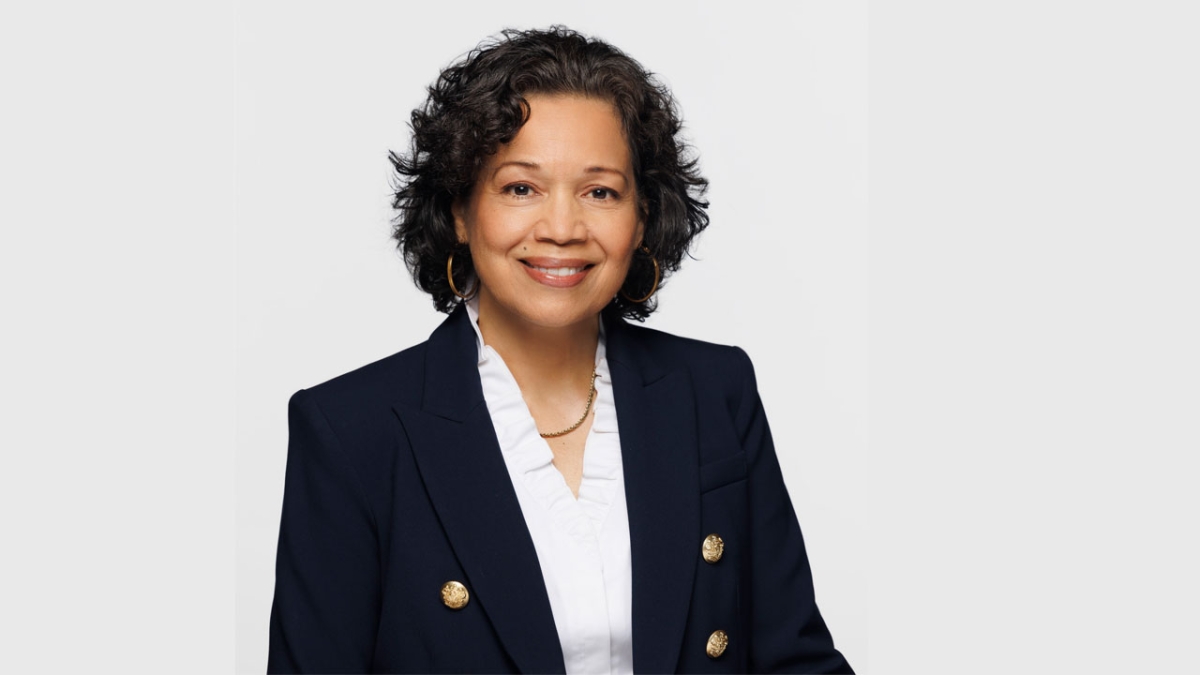
CBS News president to give keynote address at Cronkite School’s spring convocation
Ingrid Ciprián-Matthews, president of CBS News, will serve as the keynote speaker at Arizona State University’s Walter Cronkite School of Journalism and Mass Communication spring 2024 convocation. …
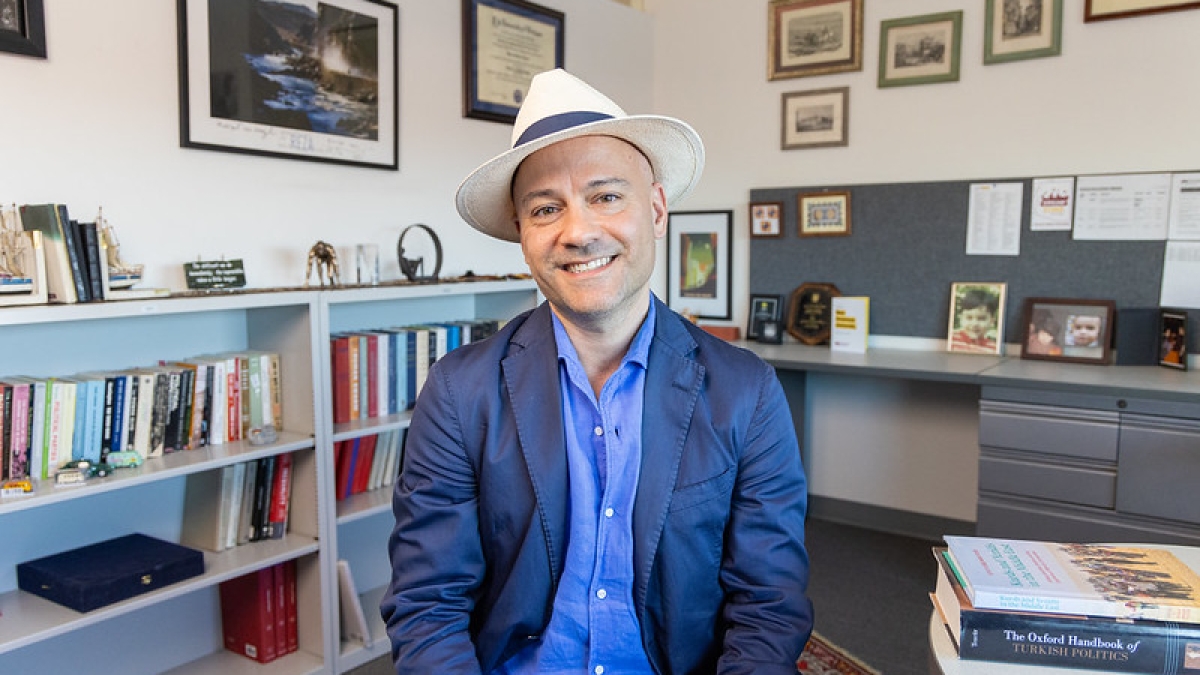
School of Politics and Global Studies director's new book explores mass violence
Why do people commit atrocities and why are certain groups, including religious and ethnic, more vulnerable to large-scale violence? These questions are explored in a new book by Güneş Murat Tezcür…
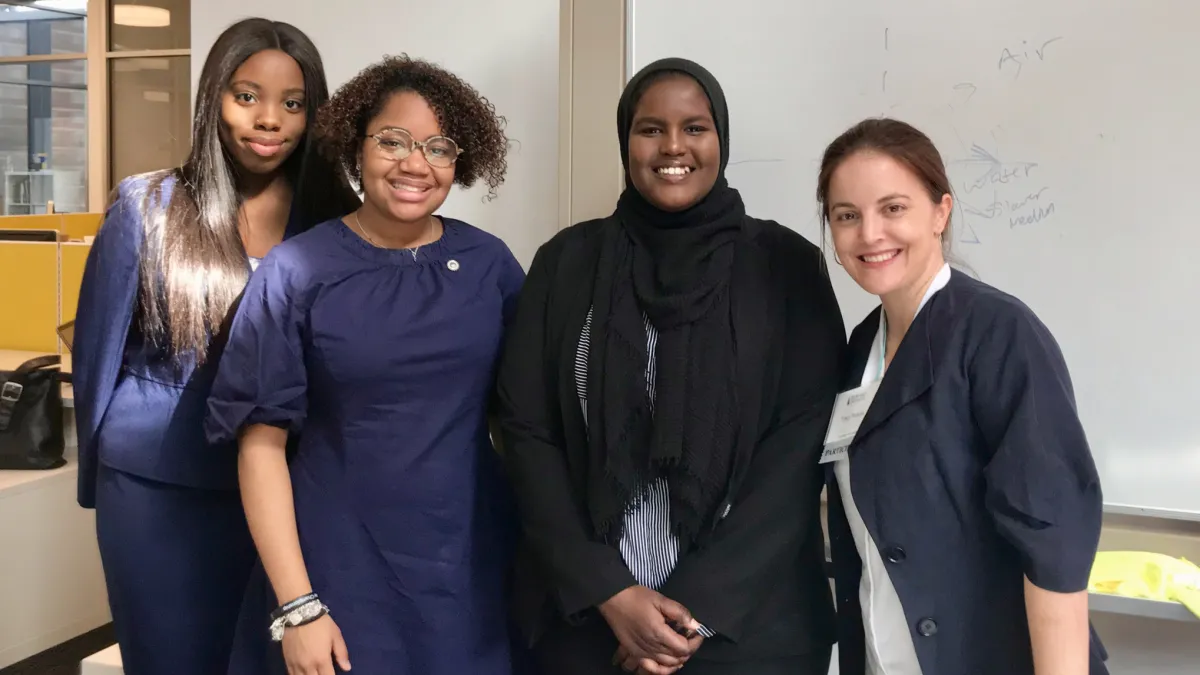
ASU faculty contributing to improvement of Wikipedia
Many academics have a love-hate relationship with Wikipedia. While the website has information about almost anything you can imagine, the credibility of that information is sometimes suspect. Tracy…
